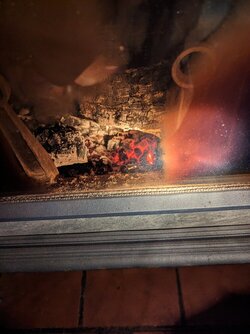Todd, longtime hearth.com member and former Keystone burner, bought a secondary-burn stove for his new place. He saw me post (maybe a hundred times ) about being way late on installing a digital cat probe in my Keystone, which I've been burning for many years. Maybe he thought "If I give him my old probe, maybe he'll finally get off his butt and do it." 😆 It's an Auber AT200 digital termometer kit, with two thermocouples! 🤗 Embodying the helpful, generous spirit that is the basis of the community here at hearth.com, Todd is indeed the man!
) about being way late on installing a digital cat probe in my Keystone, which I've been burning for many years. Maybe he thought "If I give him my old probe, maybe he'll finally get off his butt and do it." 😆 It's an Auber AT200 digital termometer kit, with two thermocouples! 🤗 Embodying the helpful, generous spirit that is the basis of the community here at hearth.com, Todd is indeed the man!  My hat is off to you, sir!
My hat is off to you, sir!
It's been quite a few weeks since he shipped it to me (no charge, no less😃) but I finally got 'er done today. In my defense, I was feeling pressure since I'm still scrambling to get dry wood for two SILs for next season. But now that I've found lots of stuff that I think I can get dry in time, or already is dry, I'm feeling better about the situation and feel like I don't have to go get wood every day.
All the cards fell right for getting that probe installed today: Warm day where I could let the stove go out, me having a cold, so being a bit tired to go out and get wood, and it was windy so going in the woods coulda been unsafe. So I went with the probe install.
When I opened Todd's package, I saw that in addition to the 10" cat probe, he had also included the washer-probe sensor for single-wall pipe. 👍
First I had to take off the rear heat shield on the stove, that reflects radiant heat off the back of the stove from going into the exterior masonry chimney and heading outside. Once that was out of the way I could remove the old analog Condar probe, which can't carry the cat temp all the way back to the dial, so ends up being more of a flue exit probe. The hole for it is on the back of the stove, which is flush with the front of the fireplace opening, so was kinda hard for me to read until I remembered I had a small telescoping mirror.
First I hooked the washer probe behind a screw securing the tee to the liner. I wanted to put in under the back screw, but that seemed hard to turn when I started removing it, leading me to think it might be hard to get the screw back in again, so I opted for another screw on the side.
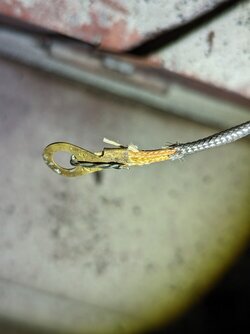
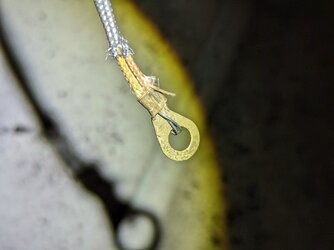
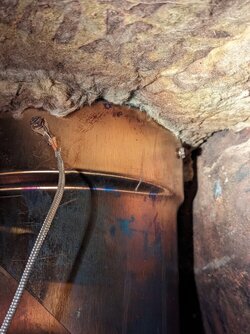
Then I threaded the thermocouple in, roughly in position over the exhaust side of the cat. Todd said he thought he mighta had to open up the probe hole in the back of his stove but that wasn't the case with mine, probe slipped right in, no problem. He had some foil wrapped around the base of the thermocouple, to get a more secure fit and hold it in place. I think I've got the probe about 1/2" or so above the cat face, and in the middle of the cat, front to back. Side to side, it's toward the right end of the cat, since that's the side it comes into the stove on, right of the rear-exit flue. Looked like Todd had bent the probe slightly, as I did with the analog probe, so that it wouldn't be real close to the end of the cat, but a little more toward the middle, anyway.
Not sure it will stay put where I've got it right now, but we'll soon see..
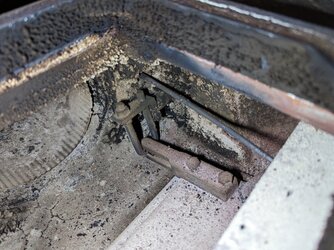
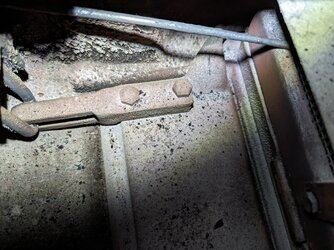
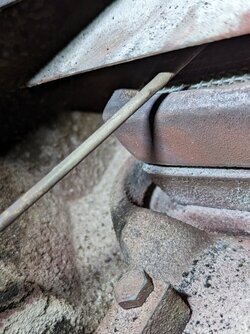
So, Todd, what do I do now? 😆 How did you use the probe...get to a certain cat temp (like 500?) and then you knew you were good to close the bypass?
And thanks once again for your generosity! Hmmm, now what could I send you...a load of Bodark, maybe?
I haven't put the heat shield back on yet, in case I have to make adjustments..
 ) about being way late on installing a digital cat probe in my Keystone, which I've been burning for many years. Maybe he thought "If I give him my old probe, maybe he'll finally get off his butt and do it." 😆 It's an Auber AT200 digital termometer kit, with two thermocouples! 🤗 Embodying the helpful, generous spirit that is the basis of the community here at hearth.com, Todd is indeed the man!
) about being way late on installing a digital cat probe in my Keystone, which I've been burning for many years. Maybe he thought "If I give him my old probe, maybe he'll finally get off his butt and do it." 😆 It's an Auber AT200 digital termometer kit, with two thermocouples! 🤗 Embodying the helpful, generous spirit that is the basis of the community here at hearth.com, Todd is indeed the man!  My hat is off to you, sir!
My hat is off to you, sir!It's been quite a few weeks since he shipped it to me (no charge, no less😃) but I finally got 'er done today. In my defense, I was feeling pressure since I'm still scrambling to get dry wood for two SILs for next season. But now that I've found lots of stuff that I think I can get dry in time, or already is dry, I'm feeling better about the situation and feel like I don't have to go get wood every day.
All the cards fell right for getting that probe installed today: Warm day where I could let the stove go out, me having a cold, so being a bit tired to go out and get wood, and it was windy so going in the woods coulda been unsafe. So I went with the probe install.
When I opened Todd's package, I saw that in addition to the 10" cat probe, he had also included the washer-probe sensor for single-wall pipe. 👍
First I had to take off the rear heat shield on the stove, that reflects radiant heat off the back of the stove from going into the exterior masonry chimney and heading outside. Once that was out of the way I could remove the old analog Condar probe, which can't carry the cat temp all the way back to the dial, so ends up being more of a flue exit probe. The hole for it is on the back of the stove, which is flush with the front of the fireplace opening, so was kinda hard for me to read until I remembered I had a small telescoping mirror.
First I hooked the washer probe behind a screw securing the tee to the liner. I wanted to put in under the back screw, but that seemed hard to turn when I started removing it, leading me to think it might be hard to get the screw back in again, so I opted for another screw on the side.



Then I threaded the thermocouple in, roughly in position over the exhaust side of the cat. Todd said he thought he mighta had to open up the probe hole in the back of his stove but that wasn't the case with mine, probe slipped right in, no problem. He had some foil wrapped around the base of the thermocouple, to get a more secure fit and hold it in place. I think I've got the probe about 1/2" or so above the cat face, and in the middle of the cat, front to back. Side to side, it's toward the right end of the cat, since that's the side it comes into the stove on, right of the rear-exit flue. Looked like Todd had bent the probe slightly, as I did with the analog probe, so that it wouldn't be real close to the end of the cat, but a little more toward the middle, anyway.
Not sure it will stay put where I've got it right now, but we'll soon see..



So, Todd, what do I do now? 😆 How did you use the probe...get to a certain cat temp (like 500?) and then you knew you were good to close the bypass?
And thanks once again for your generosity! Hmmm, now what could I send you...a load of Bodark, maybe?

I haven't put the heat shield back on yet, in case I have to make adjustments..
Last edited:


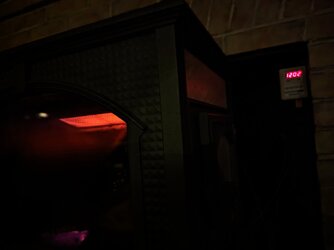

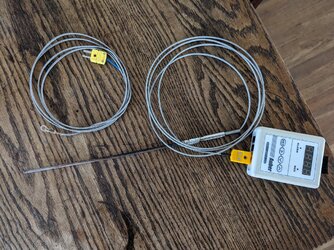
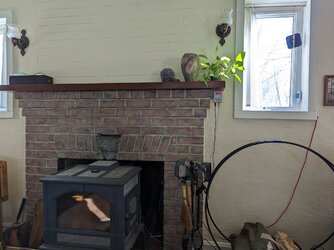


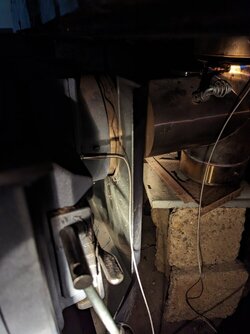
 Do you get lake effect snows there, or are you too far from the lake for that?
Do you get lake effect snows there, or are you too far from the lake for that?